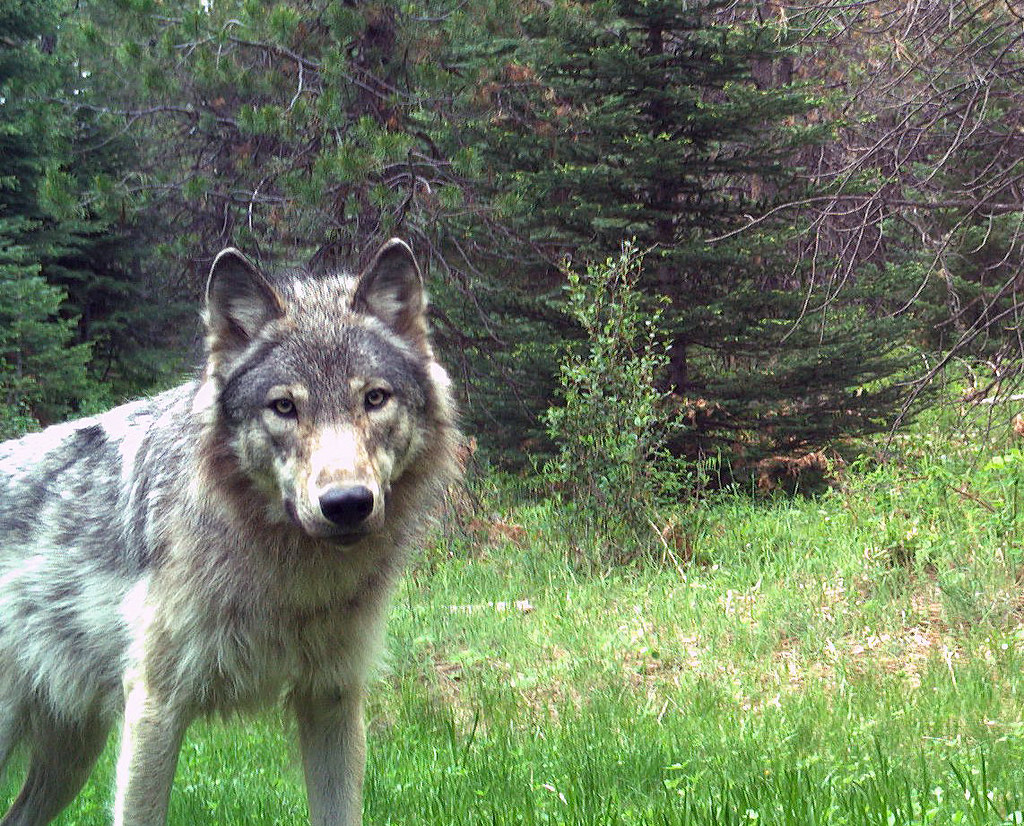| Scientific Name Canis lupus Size 4.5-6.5 feet from nose to tail, 60-130 pounds Habitat A variety of habitats—from grasslands, deserts and tundra to mountainous woodlands Status Delisted federally in 2020 (a small population of Mexican wolves in AZ and NM are still listed) |
About
The gray wolf is a generalist by nature, meaning that it can survive in a variety of habitats, including frozen tundra, dry grasslands and deserts, and wooded forest habitats. Assuming there is an adequate supply of prey, gray wolves can flourish in any of these environments, and once inhabited more than 2/3 of the United States. The majority of gray wolves’ prey consists of large ungulates, or hoofed mammals, such as elk, deer, moose and bison, but occasionally they will hunt smaller mammals and rodents or feed on carrion if prey is scarce. Gray wolves are highly social animals– they rely on a tight pack structure for hunting and protection, and are known to form very strong family bonds within the pack. Each pack consists of two breeding wolves, the alpha male and female, their pups, and subordinate wolves of various ages. Although they’re called gray wolves, they can range in color from arctic white to tan and gray to jet black—a whole pack together can be quite a colorful collective.
Read about wolf recovery efforts in Oregon
Why does it need our help?
For as long as there has been Western civilization present in North America, the gray wolf has been in trouble. European settlers found wolves difficult to live with, as they occasionally preyed on livestock. By the 19th and 20th centuries, intensive predator control programs were underway, and wolves were extirpated from most states by the early 1900’s. The last gray wolf in Oregon was shot and killed in 1946. It’s been more than half a century and gray wolves are finally starting to make a comeback in Eastern Oregon. Though things have changed since the days of government-sanctioned wolf hunts and bounties, wolves are still facing very real threats in the western states they now inhabit, such as Oregon, Idaho, Montana and Wyoming. Centuries of industrialization and urbanization have led to very fragmented, isolated habitat for wolves, and despite gains in general societal acceptance of wolves, there are still those who would like to see gray wolves disappear from the landscape once again.
Since their return to Oregon in 2009, the wolf population has been steadily increasing, with a 2020 population estimate of 173 wolves. However, gray wolves in the state are still in grave danger of being wiped out again if the need for their conservation and restoration is ignored and they are killed simply to appease the livestock industry. In order to ensure a sustainable, healthy population of wolves in Oregon, which are considered endangered by the state, stronger protections from the Department of Fish and Wildlife are necessary. Check out Oregon Wild’s wolf page for more information and news on the fight to protect gray wolves in Oregon.
Did you know?
- Wolves have very large paws—a 60 pound wolf can have the same size paw as a 100 pound dog.
- There were no confirmed human deaths by healthy wolves in the entire 20th century.
- Although packs can reach upwards of 10 individuals, the alpha male and female are almost always the only wolves that breed.
- Another common name for the gray wolf is the timber wolf.
- The saliva of gray wolves is thought to reduce bacterial infections in wounds.



